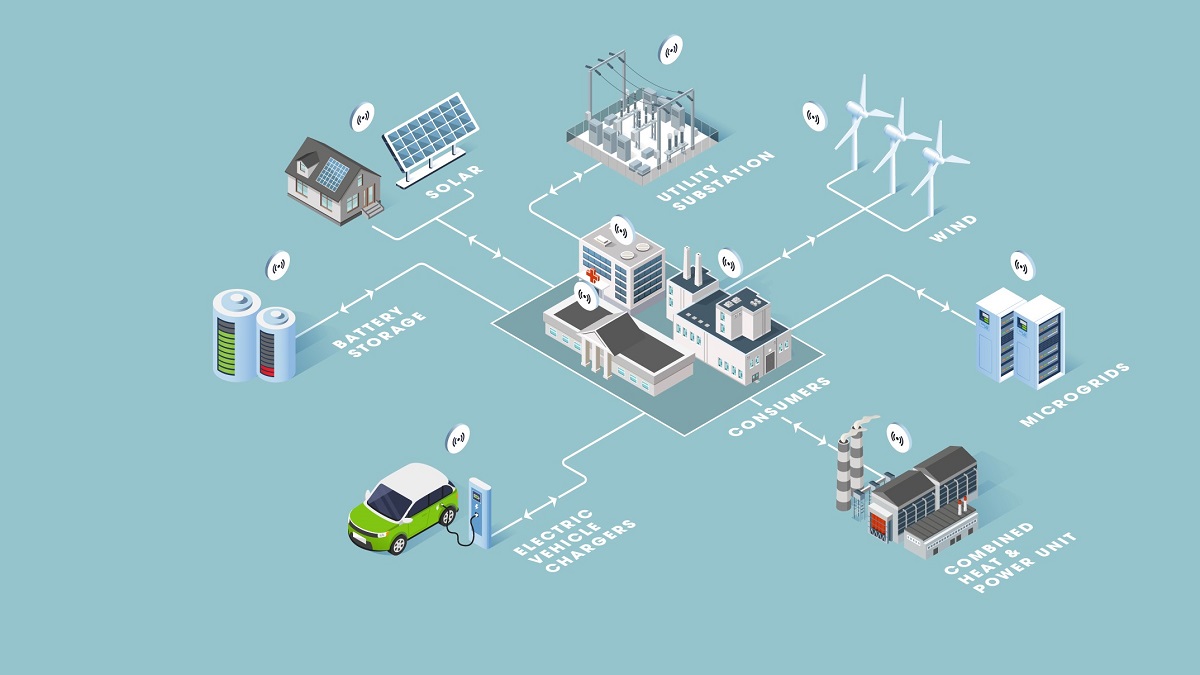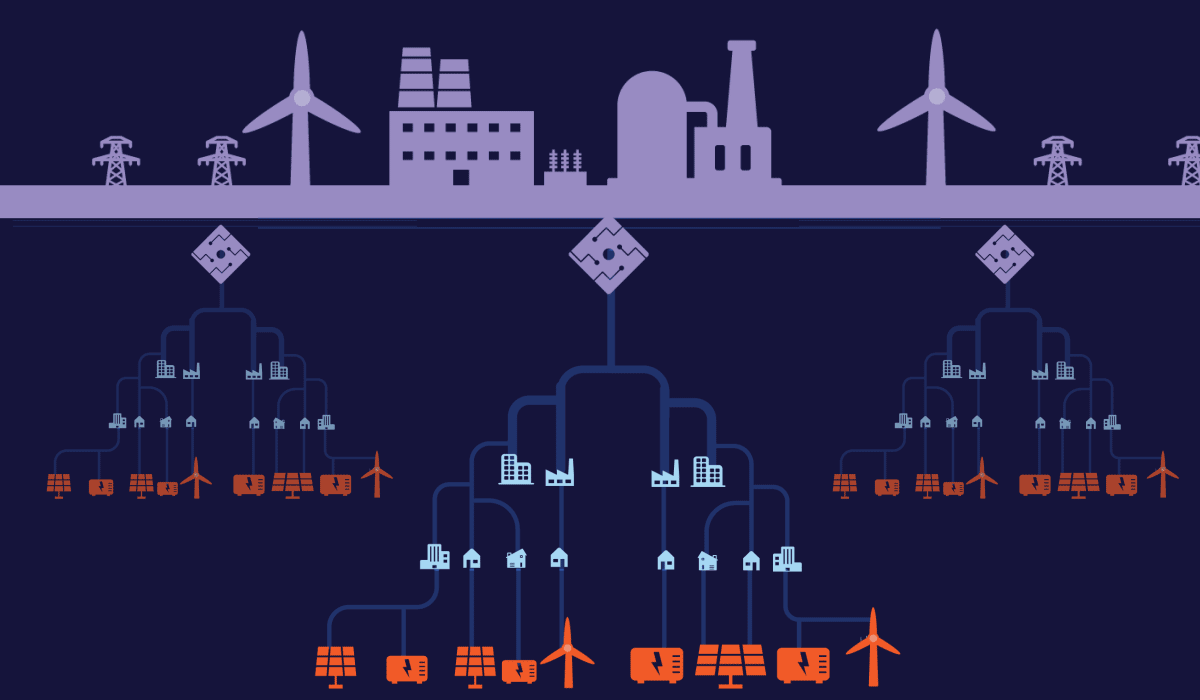The world is currently undergoing a significant shift towards sustainable energy sources from traditional coal and fossil fuel like unsustainable energy sources. As the effects of climate change become more apparent, countries are looking for ways to reduce their carbon footprint and transition towards a more cleaner and greener forms of energy. One promising solution in this regard is Distributed Energy Resources (DER), which refers to small-scale power generation technologies that can be installed throughout a network.
The rise of Distributed Energy Resources presents a feasible yet unique opportunity for empowering the future with sustainable energy solutions. Unlike traditional centralized power systems, Distributed Energy Resources allows for greater flexibility and control over the distribution of electricity.

This means that communities can generate and store their own energy locally, reducing reliance on fossil fuel-based grids while increasing resilience in times of natural disasters or grid failures.
Moreover, Distributed Energy Resources (DER) technologies can help to create jobs and stimulate economic growth by encouraging innovation in the renewable energy sector.
In this article, we will explore the concept of Distributed Energy Resources (DER) in detail with simple and easy to understand language, discussing its benefits for creating a more sustainable future and examining some examples of DER technologies already being implemented around the world.
Understanding Distributed Energy Resources (DER).
The current section provides an in-depth explanation of the concept and functionality of energy generation systems that are located close to the end-users, hence decentralizing the production and distribution of electricity. DER (Distributed Energy Resources) applications include various renewable energy sources such as solar photovoltaic panels, wind turbines, biomass generators, fuel cells, and micro-hydro turbines.

DER systems can be installed in residential, commercial, or industrial buildings and operate either independently or in coordination with centralized power plants.
DER integration challenges include grid management issues such as voltage regulation and frequency stability. The intermittent nature of some DER technologies like wind and solar power can cause fluctuations in supply that may destabilize the grid if not managed properly. Also, technical limitations like limited capacity for storage batteries may affect the reliability of DER during peak demand periods.
Therefore, effective integration requires careful planning by utilities to ensure proper installation of these resources while maintaining a reliable grid system overall.
Benefits of DER for Sustainable Energy.
The integration of renewable energy sources into the grid through DER technologies has been identified as a critical strategy for reducing greenhouse gas emissions and mitigating the negative impacts of climate change. By leveraging distributed generation and storage technologies, DERs can help reduce carbon emissions, increase grid resilience, and improve energy efficiency. Furthermore, DERs offer various benefits to local communities such as greater control over their energy usage and costs.
Community engagement is also an essential aspect of DER deployment. The involvement of communities in DER projects can foster local support for sustainable energy development and ensure that their needs are met while addressing environmental concerns. Additionally, policy implications play a crucial role in promoting the adoption of DERs. Governments need to create favorable policies that encourage investment in sustainable energy technologies while ensuring equitable access to these resources across all sections of society.
Overall, the benefits provided by DERs underscore their potential to empower the future with sustainable energy systems that are environmentally friendly, socially just, and economically viable.
Examples of DER Technologies.
A comprehensive understanding of the diverse range of DER technologies and their respective applications can provide insights into how sustainable energy systems can be developed to address environmental concerns.
One example of a DER technology is microgrid systems, which are small-scale power grids that are capable of operating independently or in conjunction with larger power grids. These systems typically rely on renewable energy sources such as solar panels, wind turbines, or hydropower generators to generate electricity. Microgrid systems offer several benefits compared to traditional grid systems, including increased reliability and resiliency, decreased reliance on fossil fuels, and reduced greenhouse gas emissions.
Another example of a DER technology is energy storage systems (ESS), which store excess electricity generated by renewable energy sources for later use.
ESS can be integrated with microgrid systems to improve their performance and efficiency by providing backup power during outages or peak demand periods.
Additionally, ESS can help reduce the need for expensive infrastructure upgrades by leveling out fluctuations in supply and demand. Other examples of DER technologies include distributed generation systems such as rooftop solar panels or small-scale wind turbines and electric vehicles equipped with vehicle-to-grid capabilities that enable them to act as mobile batteries for homes or businesses during emergencies or blackouts.
Overall, these technologies have the potential to transform the way we produce, distribute, and consume energy while promoting sustainability and reducing our carbon footprint.
Implementing DER for a More Resilient Energy System.
Integrating diverse DER technologies into existing grid systems can enhance energy resilience, promote sustainability, and reduce carbon emissions, thereby providing an efficient and cost-effective way to meet the growing demand for clean energy.
One way to implement DER in a more resilient energy system is through microgrids.
Microgrids are small-scale power grids that offer localized control over generation, storage, and distribution of electricity.
They can operate independently or in coordination with the main grid and have been shown to provide reliable power during natural disasters or other emergencies.
Community Energy is another strategy for implementing DER in a more resilient energy system. This approach involves enabling communities to own and operate their own renewable energy resources such as solar panels or wind turbines.
By generating their own electricity locally, these communities can become less dependent on centralized power grids while reducing their carbon footprint.
Community Energy projects also have the potential to create jobs and stimulate local economies by keeping money within the community rather than sending it out to large utility companies.
Overall, integrating DER technologies through Microgrids and Community Energy has enormous potential for creating a more sustainable and resilient energy system that benefits both individuals and society as a whole.
Frequently Asked Questions (FAQ).
What Are the Drawbacks of Implementing DER Technologies in a Community or Region?
When considering the implementation of Distributed Energy Resources (DER) technologies in a community or region, it is important to acknowledge potential drawbacks.
Environmental impacts are a significant concern as DER systems can result in increased land-use, noise pollution, and visual impacts. Furthermore, social equity considerations must be addressed to ensure that all members of the community have equal access to DER technologies and their benefits. Implementation plans should prioritize the involvement of marginalized groups and address any potential displacement or disruption caused by DER projects. Additionally, financial barriers may limit access to DER technologies for low-income households. Therefore, careful consideration must be given to both environmental impacts and social equity considerations when implementing DER technologies in a community or region.
How Can Individuals or Businesses Ensure That They Are Maximizing the Benefits of DER Technologies, Such As Cost Savings and Energy Independence?
One of the key factors in maximizing the benefits of Distributed Energy Resources (DER) technologies is DER system optimization. This involves optimizing the use and management of various DER assets to achieve maximum value and efficiency. This can be achieved through careful planning, monitoring, and control of DER systems. Additionally, DER financing strategies can also play a crucial role in ensuring that individuals or businesses are able to fully leverage the benefits of these technologies.
Effective financing strategies can help reduce upfront costs associated with installing DER systems, making them more accessible to a wider range of consumers. Overall, by focusing on both system optimization and financing strategies, individuals or businesses can ensure that they are able to fully realize the cost savings and energy independence benefits offered by DER technologies.
Are There Any Regulatory Barriers or Challenges to Implementing DER Technologies, and How Can They Be Addressed?
Regulatory simplification and DER adoption incentives are essential in addressing the regulatory barriers or challenges to implementing DER technologies.
Regulatory frameworks play a significant role in shaping the market for DER, and complex regulations often discourage investment in distributed energy resources. Streamlining regulations can help reduce costs associated with compliance and improve access to financing for project developers.
Furthermore, incentives such as tax credits or rebates can encourage individuals or businesses to invest in DER technologies. These measures can stimulate innovation, increase competition, and drive down costs associated with DER deployment while promoting energy independence and environmental sustainability. Therefore, policymakers must work collaboratively with stakeholders to design effective policies that simplify regulatory processes and incentivize the widespread adoption of DER technologies.
How Does the Integration of DER Technologies Impact the Overall Stability of the Grid?
The integration of Distributed Energy Resources (DER) technologies has the potential to impact the overall stability of the grid. DERs, such as solar panels and wind turbines, can introduce variability and uncertainty in power generation due to their dependence on weather conditions. This can lead to challenges in maintaining grid stability, especially during periods of high demand or unexpected events like storms or equipment failures. However, with proper planning and implementation, these challenges can be addressed through advanced technology solutions and regulatory frameworks that incentivize the use of DERs while ensuring grid reliability.
Achieving a balance between optimal utilization of DERs and maintaining stable grid operations will require careful consideration of technical capabilities, economic incentives, and policy frameworks by stakeholders across the energy sector.
How Can Communities or Regions Collaborate To Create a More Effective and Efficient DER System?
Community collaboration is crucial in the optimization of efficiency in distributed energy resources systems. Collaborative efforts among communities or regions can help identify opportunities for resource sharing, such as excess energy production from one area being transferred to another area with a high demand for energy.
Additionally, collaboration can lead to the development and implementation of joint planning strategies that promote DER deployment and management at a larger scale. Such strategies may include the establishment of common standards and protocols for interconnecting DER systems across different regions, which can enhance their interoperability while reducing technical barriers.
Furthermore, community collaboration enables stakeholders to pool their knowledge and expertise in identifying potential challenges and developing solutions that are customized to specific local needs.
Overall, community collaboration has significant potential in facilitating more effective and efficient DER system deployment, management, and operation.
Conclusion.
In conclusion, the implementation of Distributed Energy Resources (DER) can empower the future with sustainable energy. DER technologies offer benefits such as increased efficiency, reduced carbon emissions, and cost savings for consumers.
The integration of DER into the current energy system can also enhance resiliency and reliability during power outages or natural disasters.
Like puzzle pieces coming together to form a complete picture, DER technologies work in harmony to create a more resilient and efficient energy system. The use of solar panels, wind turbines, batteries, and other DER technologies can reduce dependence on fossil fuels and promote a cleaner environment for future generations. It is crucial for policymakers and energy stakeholders to work together in implementing DER solutions that address environmental concerns while meeting the growing demand for electricity.
As we move towards a cleaner and greener future, embracing distributed energy resources will be essential in creating an energy system that is not only sustainable but also reliable and need of the upcoming time.
Leave a Reply